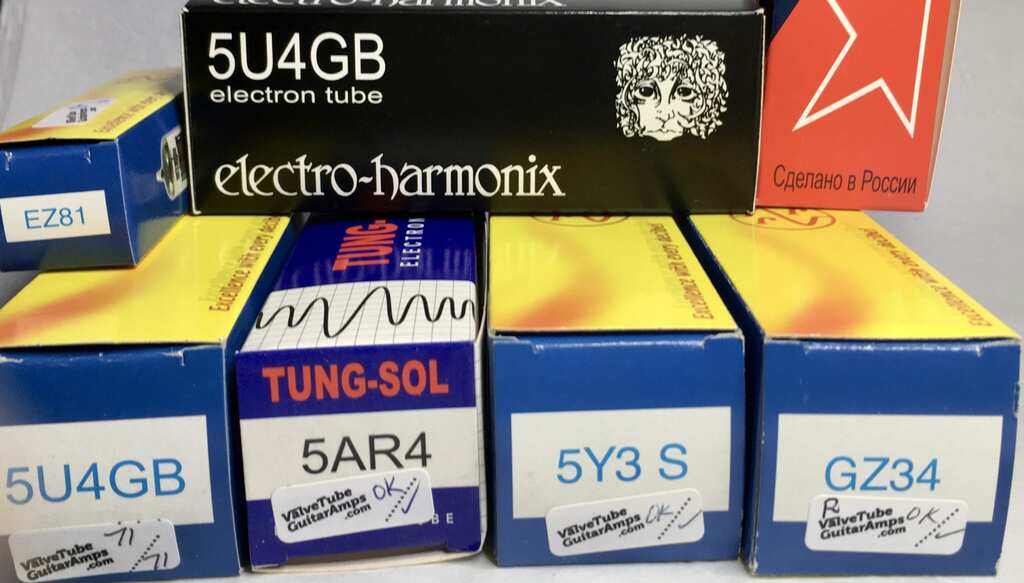Many amps have a valve rectifier valve. Typical types are EZ81, 5Y3, GZ34/5AR4 and 5U4. There are variations on the letters at the end of the part number but the basic part number product will do the job.
The alternative is to use solid state diodes.
So why have a less reliable valve/tube rectifier than modern diodes?
rectifier is just the old name for a diode.
How do you know when your rectifier valve needs replaced?
Diodes have the advantage that the manis transformer just needs one simple wiring for the high volts. the diodes cost literally fractions of a penny so they are great for amp manufacturers as they are so cheap.
There are only two “diodes” in a rectifier valve. they get around this by using a centre tap on the HT ( ” B+” ) winding. Adds a little more more cost to the transformer so that only two diodes can be used.

The advantage of the valve rectifier is that it has a much higher resistance than a solid state diode. It is usually called “sag” because the B+ supply drops ( = sags) when a loud note is played. The voltage increases as the note dies away. The rectifier acts as an audio compressor. We have some high sag JJ Electronic GZ34’s which we have selected during our testing of our stock
Many folks forget about the rectifier valve when replacing the audio valves in an amp.
They wear just like any other valve. The electrodes can start to flap around inside as the metal fatigues. The insulation can break down.
Examples of Rectifier Failure
The obvious failure of a rectifier becomes apparent when you switch your amp on and nothing happens. You check the mains fuse and the HT fuse and they are both blown. Usually a good sign the rectifier needs replaced.
Be aware that some amps also have internal fuses and so just replacing the fuses on the outside panels will not cure the silence. You need to check all the fuses in the amp.
Sometimes the rectifier starts to glow red. It has a partial short inside but not enough current is being used to blow the fuse. Usually the mains hum gets much louder when this bhappens.
Make sure the correct fuse rating s are being used or else this type of failure can set you on the road to needing a replacement mains transformer. This is very hazardous to your wealth!
It is natural to think that popping, crackling and fizzing noises are due to a duff pre-amp or output valve. the rectifier valve can cause the same effect. It is caused by the insulation starting to fail.
Some amps are harder on rectifiers than others. Maybe I have been unlucky because I have had a number of these amps arrive which are dead on arrival. A new rectifier plus a number of fuses usually fixes the issue.
We suggest changing the rectifier valve after around 1500 hours of use. This will ensure that your amp is reliable and non silent at that important gig!
We stock a good range of rectifier valves from JJ Electronic, EHX, Tung Sol.
You can find our range of rectifiers by clicking here

